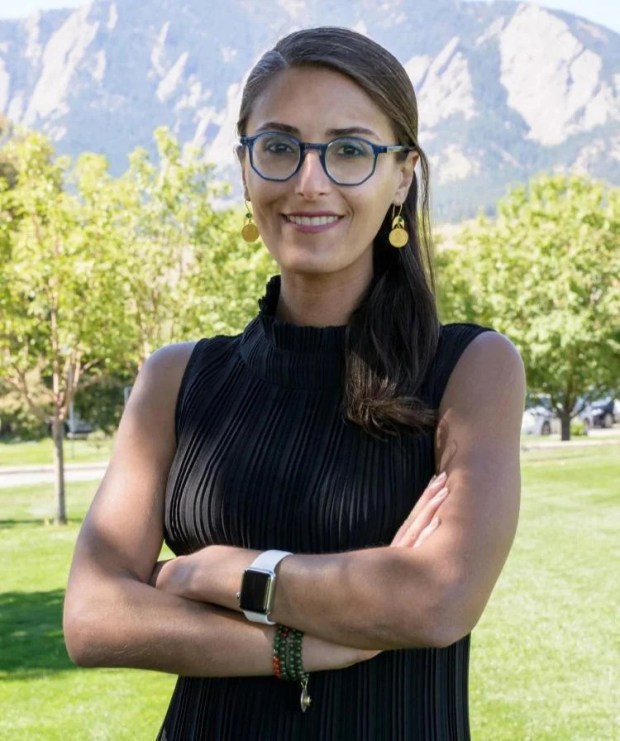About 75% of Colorado prisons are likely to experience a natural disaster but are not prepared to keep inmates safe, according to new University of Colorado Boulder research.
The researchers found the majority of Colorado prisons are highly vulnerable to hazards including floods, wildfires and extreme temperatures. However, inmates can’t leave to protect themselves from the dangers of natural disasters.
Interviews conducted as part of a separate but related CU Boulder research project revealed inmates would turn on the toilet just to circulate air in an extremely hot cell or stuff clothes over vents and windows to keep wildfire ash out of their cell.
“Its unbelievable the type of conditions they’re exposed to and there’s no way things are going to change without bringing it to the public and some compassion,” CU Boulder Professor Shideh Dashti said.

Dashti and her team looked at census data from 110 Colorado facilities, including prisons, jails and juvenile detention and immigration detention centers. They used Geographic Information System mapping software and climate modeling data to calculate whether each facility was at low, medium or high risk of wildfire, heatwaves, floods and landslides.
They found that about 75% of facilities, which houses 83% of Colorado’s incarcerated population, have either moderate or high exposure to at least one hazard, and 17% are at risk of two.
One third of facilities, housing about 12,700 people, are at medium to high risk of wildfire. Fifteen are at risk of flooding while 26 had no flood risk data available from the Federal Emergency Management Agency.
In Colorado, about 31,000 people are incarcerated. About half of facilities are at risk of extreme heat.
“It’s deadly,” Dashti said. “Especially in the case of extreme heat.”
The study also found that Black people are significantly more likely than white people to be jailed in a facility at risk of extreme heat, while Hispanic or Latino people are at greater risk of experiencing a flood while incarcerated.
Dashti said the research exposes a racial justice issue in addition to an environmental justice issue. According to data from Pew Charitable Trusts and Jail Data Initiative, racial disparities continue to persist in many American jails.
About 13% of the United States population are Black, but Black people make up more than 37% of people in prison or jail, according to the Prison Policy Initiative. If Black and Hispanic people were incarcerated at the same rates as white people, prison and jail populations would decline by almost 40%.
“They (prisons) are taking advantage,” Dashti said. “The taxpayer money is paying for the incarcerated and this is a group that doesn’t have a voice and the public is generally uneducated about what leads to incarceration, especially in this country with such a history of racial bias.”
‘Truly horrifying’
Dashti said the prisons would not grant them entry to interview currently incarcerated people or provide any additional information to aid their research.
So, CU Boulder Professor Ben Barron led the separate research project that interviewed formerly incarcerated prisoners to gain a better understanding of the conditions.
“It’s truly horrifying to listen to,” Barron said in a release. Barron conducted nine interviews and four focus groups for a separate paper that’s not yet published.
Some who were interviewed reported enduring temperatures in the upper-90s inside their cells.
“We just want the doors open because we’re dying in here,’” one told researchers.
“I remember people just burning,” one 46-year-old man said in the study while describing his cell mate. “He was out there all day. And he was so purple, and he had edema on his head so bad you could put your thumb in his forehead and it would just stay.”
Dashti said the solution calls for reimagining justice infrastructure in the United States and creating healing spaces instead of the existing prison system focused on crime and punishment.
“We are not providing an environment that prevents crime by investing in education, instead we are hurting our most vulnerable people by torturing them,” Dashti said.
Dashti said the most common comment she hears from people is that there are other, more important issues and that these people committed a crime and are being punished regardless.
Talking to someone who is or has been incarcerated is like talking to any other person, Dashti said, and they’re still human beings.
“Many of then have made a mistake,” she said. “How many of us haven’t made a mistake when we were younger?”
Additionally, she said some of them are wrongly incarcerated. In many other cases, the punishment they experience in the extreme conditions of the prisons are not proportional to the crime they committed, she said.
Dashti said the goal of the research was to create a framework for studying this further throughout the nation and alarm the community that there’s a lack of research in this area. She hopes others will continue this type of research and that it will someday have an effect on policymakers.
“In the end, I think if the American public becomes more educated and compassionate, it will move toward the end of incarceration in America as a whole, and that’s the ultimate goal,” Dashti said.
This post was originally published on this site be sure to check out more of their content.








